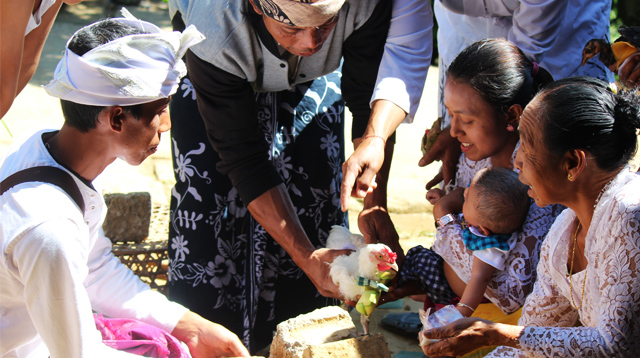BALINESE Hindu tradition has several traditions related to the rituals of the life cycle from birth to death. They are organized in accordance with local traditions. Each region across the island may have a slight difference. However, it does not matter because the essence is the same.
After the baby reaches the age of 3 months (105 days), for example, it is given a nelu bulanin (three-month) ceremony. After that, its otonan or birthday will be celebrated based on the day of birth not date of birth in terms of pawukon calendar.
Basically, this pawukon calculation just takes three elements, namely the day, pancawara and wuku. For example, Saniscara (Saturday) Kliwon (five-day week) and Landep (wuku — equally consists of seven days in a week like saptawara (seven-day week in the wewaran) but it does not belong to wewaran; Landep is one of the 35 wukus where each wuku lasts 7 days. This is called Tumpek Landep.
If this is not possible due to particular reason, the ceremony can be postponed and held in the sixth month coupled with the baby’s otonan. This otonan is the first birthday celebration based on the pawukon calendar. For information, 1 pawukon calendar year has 210 days.
This ceremony can be said to be the culmination of ceremony during infancy because there are several small ceremonies that precede and are held when the baby remains in the womb, birth and breaking of the umbilical cord. This otonan ceremony is intended as an expression of gratitude to God for taking care of him until he was born safely.
According to some scriptural sources, before a baby undergoes this three-month ceremony, he is said to be still spiritually impure. On that account, it is not allowed to enter any holy places or temples to offer prayers.
After this baby’s three-month ritual, then the baby is declared sacred and can step on the ground and can be invited to enter the holy place. Apart from this, the baby is also prepared to face the influences of good and bad. This is the initial moment of the five senses and affects the level of spiritual purity or atman of the baby.
In this ceremony, there is also a spiritual name giving. But in civil registry, the name should have been given at birth because it is related to the mandatory birth certificate that must be made by the hospital or maternity clinic. This then becomes the basis for reporting the birth to the hamlet chief for an application of birth certificate.
In a series of this Hindu life-cycle rite, the baby’s hair is also cut and bought by offering and then several family members and relatives also buy it with money voluntarily.











